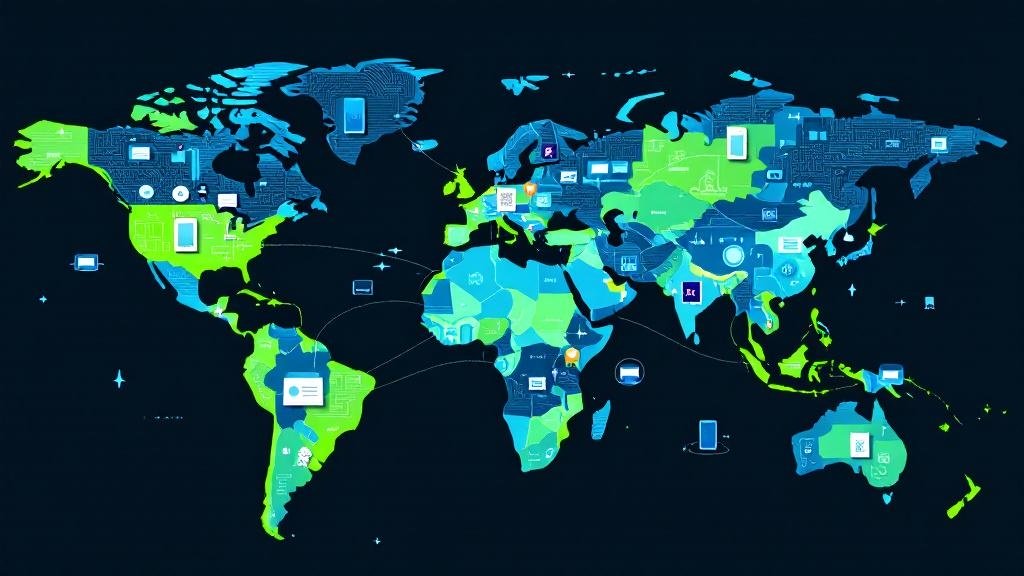In today’s fast-paced world, financial inclusion is no longer a luxury but a necessity. With the power of mobile banking, financial services are becoming more accessible to people in even the most remote corners of the globe. This innovation is making it possible for individuals who have traditionally been excluded from the formal financial system to gain access to essential banking services. Whether it’s a person in a rural village or someone in a crowded urban slum, mobile banking is transforming the financial landscape.
Understanding Financial Inclusion Through Mobile Banking
Financial inclusion refers to the ability of individuals to access and use appropriate financial products and services, such as savings accounts, loans, insurance, and payments, at an affordable cost. However, a large portion of the global population, especially in developing countries, remains unbanked or underbanked. According to the World Bank, nearly 1.7 billion adults worldwide still lack access to a basic bank account.
Mobile banking for financial inclusion plays a pivotal role in bridging this gap. With a mobile phone in hand, individuals can access a variety of digital banking solutions that were once out of their reach. By offering low-cost, accessible financial services, mobile banking technology is empowering people in underserved areas to take control of their financial futures.
The Power of Mobile Banking for Financial Inclusion
Mobile phones have become more than just communication tools—they are now gateways to a wide array of financial services. In developing regions, where traditional banks are scarce or non-existent, mobile banking provides an opportunity for people to access the financial ecosystem without needing a physical bank branch. This is a game-changer, especially for those in remote areas or who belong to economically disadvantaged groups.
Mobile-based banking for the poor and financial literacy via mobile apps are two major ways mobile banking is helping to close the financial inclusion gap. Here’s how:
1. Financial Inclusion Mobile Apps:
Mobile apps have simplified the process of accessing financial services. Users can open bank accounts, transfer money, pay bills, and even invest—all from their smartphones. Financial inclusion mobile apps like Paytm, M-Pesa, and GCash have revolutionized the way people manage their finances.
2. Microfinance Via Mobile Banking:
Microfinance is another key component of financial inclusion. It provides small loans to individuals or communities that do not have access to traditional banking services. Mobile-based platforms now offer microfinance services that are accessible via mobile apps, which is especially beneficial in regions where formal banking infrastructure is limited.
3. Inclusive Banking Technology:
Inclusive banking technology aims to offer banking services that cater to the unique needs of underserved populations, especially those who cannot afford traditional banking methods. Mobile wallets and mobile payment systems for financial inclusion are examples of how technology is helping to include previously excluded individuals in the formal financial sector.
4. Digital Banking Platforms for the Underserved:
Digital banking platforms like Chime, Kiva, and Nubank allow people to manage their finances without the need for physical bank branches. These platforms are particularly useful in areas where banking infrastructure is limited or completely absent, as they offer online-only accounts and mobile access to financial services.
Mobile Banking in Developing Countries
The impact of mobile banking on financial inclusion is particularly evident in developing countries. According to a study by the Global System for Mobile Communications (GSMA), mobile money services have played a significant role in increasing access to financial services in countries like Kenya, India, and the Philippines.
How Mobile Banking Solves Problems for Developing Countries:
Accessibility: Many people in rural areas live far from traditional banking branches. Mobile banking services for remote areas ensure that banking is just a tap away.
Lower Costs: Establishing physical banks in remote areas can be expensive. Mobile banking reduces operational costs, allowing financial services to be offered at a much lower price point.
Security: Mobile banking apps offer secure transactions, reducing the risk of theft or loss, which can be more common when people rely on cash.
Financial Empowerment: Mobile banking for financial empowerment gives individuals the tools they need to make informed financial decisions, whether it’s managing expenses or saving for the future.
Financial Inclusion Through Mobile Wallets and Digital Payments
Mobile wallets are one of the most powerful tools in financial inclusion. They allow users to store money electronically and make transactions without the need for a physical bank account.
Mobile Wallets for Financial Inclusion:
Mobile wallets like Google Pay, Samsung Pay, and Apple Pay have become global giants in digital payments. However, more localized mobile wallets, such as Paytm and M-Pesa, are helping individuals in developing countries to access basic financial services.
Digital payment systems for the unbanked are making it easier for individuals to make purchases, pay bills, and send money to their families, even in areas without physical bank branches.
Bankless financial services are becoming a reality thanks to mobile wallets, which give users control over their finances even without a traditional bank account.
The Role of Mobile Banking in Promoting Financial Literacy
A critical component of financial inclusion is financial literacy. Many individuals in underserved areas lack the knowledge necessary to manage their finances effectively. Through mobile banking apps, financial institutions are offering financial literacy via mobile apps, educating users on topics such as budgeting, saving, and investing.
For example, some apps provide basic tutorials on how to save money or the importance of maintaining a budget. This empowers individuals to make informed financial decisions that improve their economic standing.
How Mobile Banking Apps Promote Financial Literacy:
Interactive Lessons: Many mobile banking apps include interactive modules that teach users about financial concepts in an engaging way.
Instant Access to Resources: Instead of relying on in-person seminars or workshops, users can learn on the go, at their own pace.
Real-Time Feedback: Mobile banking apps offer features like spending trackers, which help users see where their money is going and suggest ways to save.
Mobile Banking Solutions for Financial Access
The digital banking solutions for the underserved offer more than just basic banking services. They enable people to access a variety of financial products such as insurance, savings plans, and loans. This is especially important for unbanked populations, who previously had no access to such products.
Mobile Banking for Financial Access:
Access to Credit: Microloans and small personal loans are now available through mobile apps, helping people to invest in their businesses or meet their personal needs.
Insurance: In some regions, mobile banking solutions are offering microinsurance products to help people protect their health, homes, and businesses.
Savings Accounts: With mobile banking, individuals can open and manage savings accounts, which encourages a culture of saving.
Loans for Entrepreneurs: Mobile apps like Kiva allow small business owners to receive loans to expand their businesses, which can improve their overall financial well-being.
FAQs on Mobile Banking for Financial Inclusion
1. What is financial inclusion through mobile banking?
Financial inclusion through mobile banking refers to providing underserved individuals with access to financial products and services like savings accounts, loans, and payments via mobile apps, especially in areas where traditional banking is not available.
2. How does mobile banking help underserved populations?
Mobile banking allows individuals in remote or economically disadvantaged areas to access banking services, such as transferring money, paying bills, and accessing microloans, all from their mobile devices.
3. Can mobile banking improve financial literacy?
Yes! Mobile banking apps often include financial education tools that help users learn how to manage their money, budget, save, and invest, thereby promoting financial literacy.
4. What is the role of mobile wallets in financial inclusion?
Mobile wallets provide an easy way for people to store money electronically and make transactions without needing a physical bank account. They are especially helpful for those in developing countries with limited access to traditional banking.
5. How does mobile banking support microfinance?
Mobile banking platforms enable the delivery of microfinance services, including small loans, directly to individuals, helping to empower them economically and reduce poverty in underserved regions.
6. Is mobile banking secure for unbanked populations?
Mobile banking apps are designed with strong security measures, such as encryption and multi-factor authentication, making them secure for unbanked populations to use.
7. What are digital payment systems for the unbanked?
Digital payment systems for the unbanked allow individuals without traditional bank accounts to make and receive payments, access financial services, and manage their finances through mobile apps.








Comments (0)